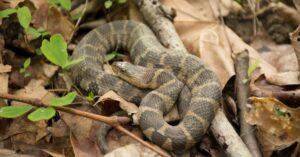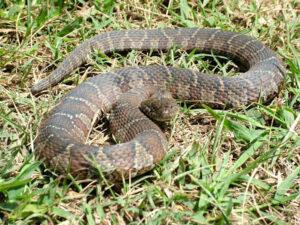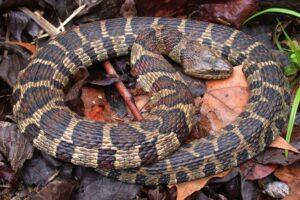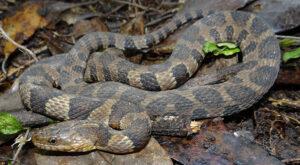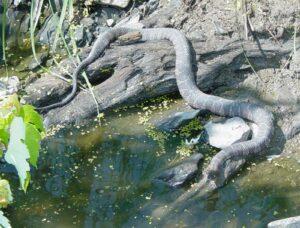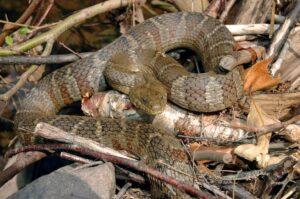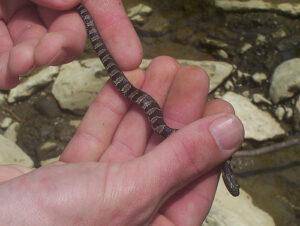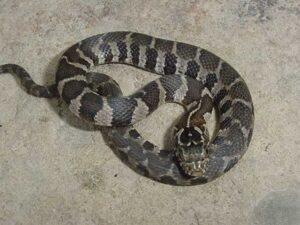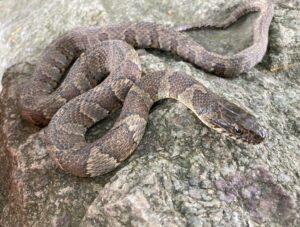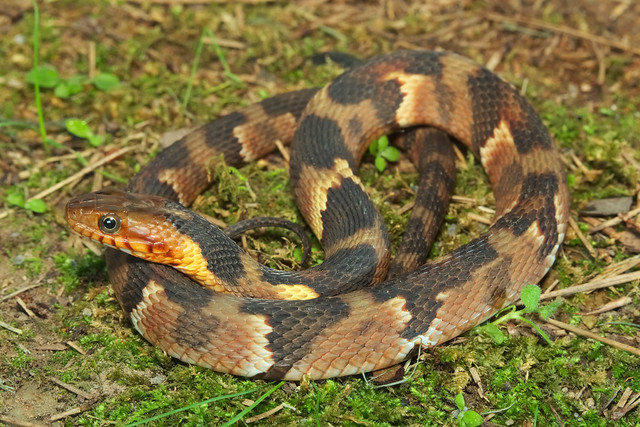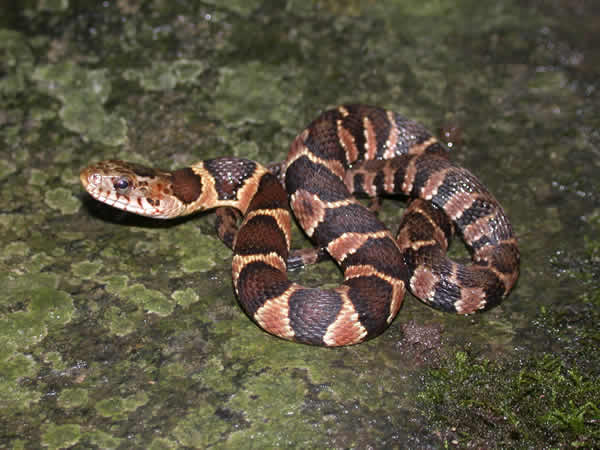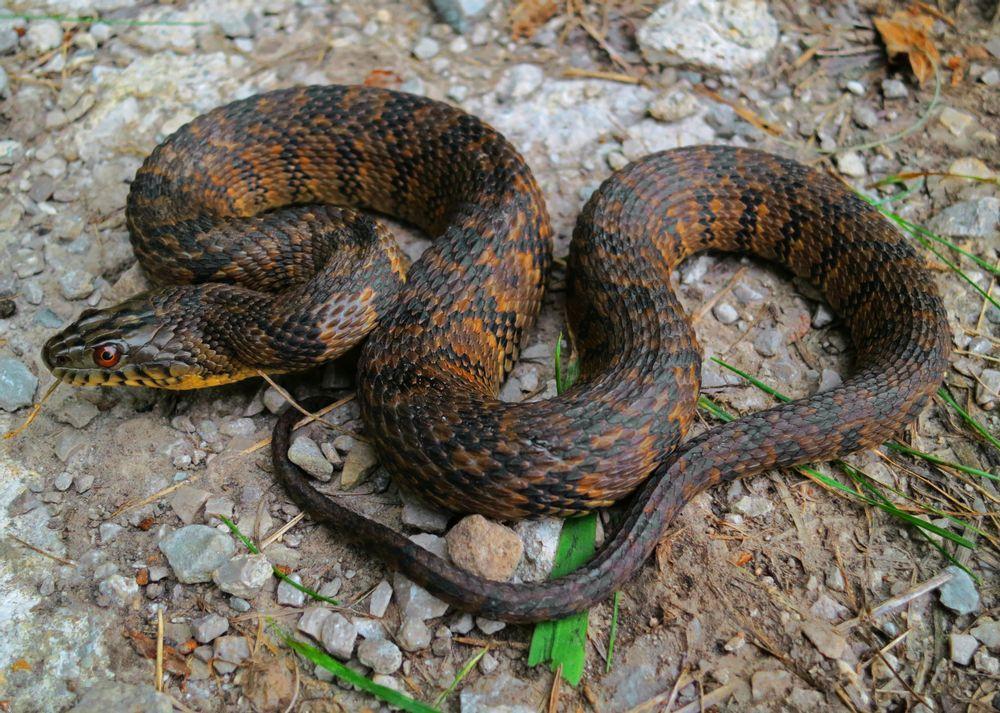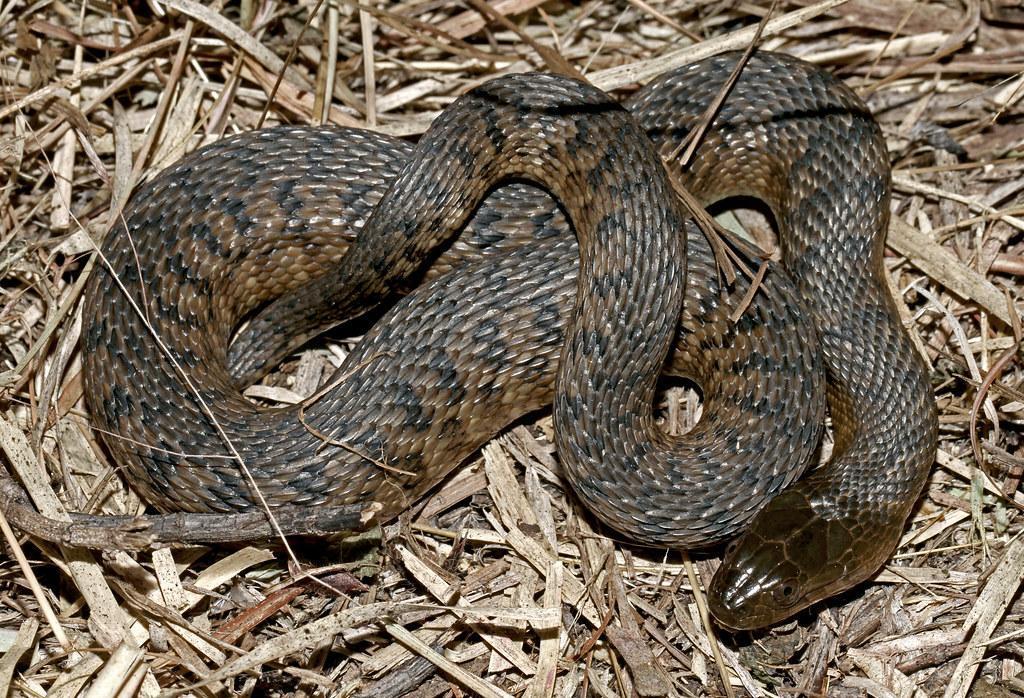The northern water snake, also known as the common water snake and northern banded water snake, is a large, common colubrid native to North America. It is often mistaken for the venomous cottonmouth. The heavy-bodied snake has variable colors and markings on its body.
Scientific Classifications
- Suborder:Serpentes
- Family:Colubridae
- Genus:Nerodia
- Species:N. sipedon
Conservation Status
Subspecies
This snake has four recognized subspecies.
- Lake Erie watersnake (Nerodia sipedon insularum)
- Midland watersnake (Nerodia sipedon pleuralis)
- Northern watersnake (Nerodia sipedon sipedon)
- Carolina watersnake (Nerodia sipedon williamengelsi)
Description
Size
The northern water snake can grow to a length of 4ft 5 in (135 cm), including its tail. The average size of a female is 2ft 8 in (81.4 cm), and that of a male is 2ft 3.5 in (69.6 cm).
The females weigh between 5.5 and 14.5 oz (159-408 g). The weight of the males is in the range of 2 and 5
oz (80.8-151 g).
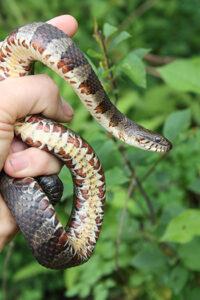
Color and Appearance
Their color can be gray, brown, brownish-black, or reddish, with dark blotches all over the body, excepting the neck, that has dark crossbands. The patterns become obscure, and the color darkens as the snake ages. Some can become almost completely black.
The belly can be yellow, white, or gray, mostly with black or reddish crescents.
Are They Dangerous to Humans
Being non-venomous, the snake is not dangerous to humans. It dives into the water at the slightest disturbance. But it defends itself vigorously if threatened, earning itself an aggressive reputation. On being captured, it bites repeatedly and releases excrement and musk. Its long teeth adapted to maintain a grip on struggling fish can inflict a minor wound. A mild anticoagulant in its saliva causes the bite to bleed more without posing any significant risk to humans. Bites from bigger individuals can be pretty painful.
Northern Water Snakes at a Glance
Distribution
Its range includes the entire central and eastern North America extending from southern Quebec and southern Ontario in the north to Florida and Texas in the south. At least from 1992, it was introduced to California, where it competes with the native giant garter snake, making it an invasive species there.
Habitat
It lives in lakes, streams, ponds, and wetlands. The juveniles are typically found in smaller streams adjacent to the bigger waterways inhabited by the adults. It helps the babies avoid predators like birds, fish, and turtles living in the bigger water bodies.
Active during both day and night, the snake is often seen basking on brush, stumps, or rocks. Spring and summer see the snakes socializing when they are coiled together, basking in the sun.
Lifespan
They have been known to live up to 9 months and 7 months as pets, but their lifespan in the wild is unknown.
Predators
The common water snake has many predators like birds, opossums, raccoons, snapping turtles, foxes, other snakes, and humans.
Diet
Fish and amphibians are its main food, and they are swallowed alive. A number of fish species are eaten by the snake, like brook trout, smallmouth bass, sunfish, bullhead catfish, minnows, and hogsuckers. Amphibians like northern cricket frogs, southern leopard frogs, toads, spring peepers, and bullfrog tadpoles are consumed by the snake. It uses its senses of sight and smell to forage.
Reproduction
Ovoviviparous (gives birth to live young from eggs that hatch inside the body)
The species mates from April to June. The babies are 7.5-9 in (19-23 cm) long. From August to October, as many as 30 young can be born at a time, but the average is 8. There is sperm competition as a female can have multiple partners.
Similar Species
Cottonmouth or Water Moccasin
The northern water snake looks like the venomous cottonmouth or water moccasin, Agkistrodon piscivorus, leading it to get killed often out of fear. But the former has a longer and more slender body, with its head the same width as its flattened neck. It has round pupils and lacks heat-sensing pits. The cottonmouth, on the other hand, has a wedge-shaped head with prominent venom glands that is wider than its neck. Its pupils are cat-like, and there are heat-sensing pits between its eyes and nostrils.
Additionally, the common water snake has flat scales on its head, while the water moccasin has smaller, rugose scutes.
Copperhead
The northern water snake has a bulb-shaped pattern that widens at the center. On the other hand, the venomous copperhead, Agkistrodon contortrix, has an hourglass-like pattern.
Care Sheet
Size of the Enclosure: A 10-gallon tank can be used to keep a single adult.
Temperature: The hot end temperature should be kept at 80-85°F. The basking spot should have a temperature of 85-90°F. The cooler end temperature can drop to a minimum of 70°F.
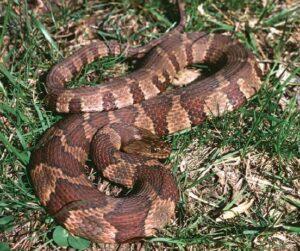
Humidity: The ideal humidity for the pet setup is 35-60%.
Substrate: Rubber-backed commercial carpets, and dry mulch are good choices for substrates.
Feeding: The pets can be maintained on a diet of salamanders, frogs, fish and small rodents.
Source
a-z-animals.com, herpsofnc.org, lh4.ggpht.com, maine.gov, illinois.gov, vtherpatlas.org, objects.liquidweb.services, i.pinimg.com, flickr.com, scontent.fccu4-2.fna.fbcdn.net, wildlifeillinois.org

